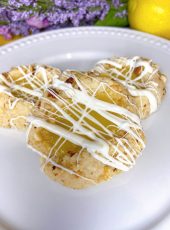The national dish of England, brought by immigrants, and romanticized as a symbol of democratic unity – Fish & Chips is even more than it seems.
“There was about fish-and-chips a sound democratic touch that no other food possessed; the poorest person could shop alongside the poshest . . . You were all one in the kingdom of fish-and-chips.” – Bill Naughton’s (1987) autobiography, quoted in John Walton’s (1992) Fish & Chips, and the British Working Class, 1870-1940.
Like a lot of food history, there are competing claims about the definitive origin of Fish & Chips. Before anyone thought to put them together, the “chip” part likely came about around the 17th century, either in Belgium or France. Ironically, according to Sussex Kitchen, one theory poses that potatoes were first fried not to go with fish, but offered instead of the protein. When riverbanks froze over in the winter, creative housewives cut potatoes into fish shapes to evoke the more plentiful days of summer. Whether the originators were the Belgians, the French, or maybe even the Spanish, they were eventually brought over to England by immigrants.
Jewish immigrants from Spain and Portugal brought the fried fish part to English cuisine, cooking them by the “Pescado Frito” method, dipped in flour, then battered. They sold them to locals from large trays hung around their necks. Thomas Jefferson wrote about eating fish “fried in the Jewish fashion” during a trip to England in the late 1700’s. According to the BBC, Lancaster locals claim that it was their hometown entrepreneur, John Lees, who first put the two together, opening England’s first “chippy” in 1863. However, it seems more likely that the first shop was opened in London’s East End in 1860, by a young Ashkenezi Jewish immigrant named Joseph Malin, who urged his family to sell fish alongside the French Fries they sold to supplement their income. Most credibly I think we can say that the national dish of England was born of immigrants.

And yet that’s not really the image we have of it, is it? It doesn’t read like an immigrant dish like America’s Chop Suey. Not only does it not seem like an immigrant dish, it seems … well, kind of Waspy. Of course, I only know Fish & Chips as an American, from British and Irish pubs and unaffiliated gastropubs. Still, it seems to me to be emblematic of British identity – a simple dish for a simple people, no nonsense, straight-forward, a hearty comfort food that warms your bones in a misty cold. Perfectly paired with a pint. It seems sort of too right for the place it comes from. If the actual meal seems very British, its identity feels very on the nose too. It seems like a call to unify across difference: a meal that symbolizes the simple joys of the working man and the special ability of their upper crust to come down-to-earth.
I would even say the meal is a global symbol of the working class. Though serving it in newspaper was ruled unsafe in the late 1980’s, we can all picture them still – cones marked with black print and grease, overflowing with fried fuel to get you through a factory job, or maybe the treat brought home on a payday. The dish’s relationship with the First and Second Industrial Revolutions is well acknowledged. The working class depended on readymade, high caloric foods to meet the demands of their long schedules. In turn, new fishing ships and refrigeration technologies provided more opportunity to access the goods. A kind of cyclical relationship.
From countless references in movies, television, and books, I also have this notion that I understand its symbolism to British people. And it seems that this is more than just a stereotype. The BBC refers to the dish as a “national treasure,” and credits it with turning the wheels of industrialization and staving off revolution. It seemed George Orwell agreed when he wrote in The Road to Wigan Pier that Fish & Chips were among the comforts that kept the British masses from revolting. Other famous Brits have weighed in too. Winston Churchill called them “the good companions.” Ministers during WWII promised to never ration access to it. Alfred Hitchcock was born at home in 1899, above the family chippy. June 4th marks their annual Fish & Chip holiday. The country sell upwards of 380 million meals of the stuff every year – just in England, in Fish & Chip shops alone. For all these reasons, Fish & Chips is perceived as more iconically British than the Beatles or The Queen.

While much of its symbolism is a natural progression, at least some of that is the result of a strategy, the work nations put in to create powerful symbols of identity. John Walton, in his 1992 work Fish & Chips, and the British Working Class, 1870-1940, argues that the meal’s press is part of an overly simplified national identity. For example, there is a kind of romance in the idea that Fish & Chips stands as a “democratic institution,” downplaying its stigma as “common.” As it turns out, the upper crust avoids rubbing elbows with the common man at local chippies.
Panikos Panayi, in his 2014 Fish & Chips: A Takeaway History, has argued that in the interest of creating Fish & Chips’ persona as a national dish, its association with immigrants has been purposefully erased. There it is. The old hypocritical chestnut of powerful nation-states: enjoying the fruits of immigrant labor and innovation while denigrating the immigrant. In the worst example of the hypocrisy, Panayi has pointed out that in the country that boasts thousands of Fish & Chip shops, the smell of fried fish has been a common anti-Semitic trope.
I just learned this history while researching for this post, but I feel like I’ve always known it. It just all seems so spot on, even though it has a bit of a hidden history. That’s the other thing about this dish that also symbolizes the British people: it’s at once straightforward and complex. Frying fish and potatoes is as bare bones as one can imagine, but the complexity of a perfect execution – with malt vinegar and tartar sauce – is unmatched. This recipe comes from The Spruce Eats, they offer a straightforward beer batter that turns out perfectly. Nothing fancy. Really delicious.
Fish & Chips
Recipe by The Spruce Eats Course: MainDifficulty: Medium4
servings20
minutes35
minutes30
minutesIngredients
- For the fish
7 tablespoons (55 grams) all-purpose flour, divided
7 tablespoons (55 grams) cornstarch
1 teaspoon baking powder
Sea salt, to taste
1 pinch freshly ground black pepper, to taste
1/3 cup dark beer, cold [see note 1]
1/3 cup sparkling water, cold [see note 2]
4 (7-ounce) thick, white fish [haddock or cod]
- For the chips
2 pounds potatoes, peeled
1 quart (1 liter) vegetable oil , or lard, for frying
- For the tartar sauce
1 cup real mayo
1/2 cup finely chopped dill pickles
2 TBSP sweet relish
2 TBSP finely chopped purple onion
1 TBSP lemon juice
1 TBSP fresh dill (or a tsp dried dill)
2-3 dashes Worcestershire sauce
Ground pepper to taste
Directions
- For the tartar sauce
- Mix all ingredients and keep in the refrigerator until ready to use. This is even better the longer it sits so you could make this earlier in the day in preparation for your Fish & Chips.
- For the fish
- In a large, roomy bowl, mix the 5 TBSP flour with the cornstarch and baking powder. Season lightly with a tiny pinch of salt and pepper
- Using a fork to whisk continuously, add the beer and the sparkling water to the flour mixture and continue mixing until you have a thick, smooth batter. Place the batter in the fridge to rest for 30 minutes to 1 hour. Go to Step 1 of the chips.
- When you're ready to begin frying, lay the fish fillets on a paper towel and pat dry. Season lightly with a little sea salt. You're going to fry chips for their first round, then fish, then chips again.
- Place the rest of the flour (2 TBSP) into a shallow bowl. Toss each fish fillet in the flour and shake off any excess.
- Dip into the batter, coating the entire fillet.
- Keep grease at 350F. Fry for approximately 8 minutes, or until the batter is crisp and golden, turning the fillets from time to time with a large slotted spoon.
- Once cooked, remove the fillets from the hot oil and drain on paper towels. Sprinkle with salt. Keep warm in oven set to 170F.
- For the chips
- While the fish batter rests, cut the potatoes into a little less than 1/2-inch-thick slices, then slice these into 1/2-inch-wide chips. Allow potatoes to soak in colder water for about 30 minutes. Place the chips into a colander and rinse under cold running water.
- Place the washed chips into a pan of cold water. Bring to a gentle boil and simmer for 3 to 4 minutes.
- Drain carefully through a colander, then dry with paper towels.
- Heat the oil to 350 F in a deep-fat fryer or large, deep, heavy saucepan. Cook the chips a few handfuls at a time in the oil for about 2 minutes. Do not brown them. Once the chips are slightly cooked, remove them from the oil and drain. Set aside.
- Heat the oil to 400 F, then cook the chips until golden and crisp, or about 5 minutes. Remove from the oil and drain. Season with salt.
Notes
- Note 1: I used a non-dark non-alcoholic beer and it still worked beautifully, but dark and alcoholic is best practice!
- Note 2: If you don't have unflavored sparkling water on hand, you can use 1/3 cup water with a squeeze of lemon juice.





